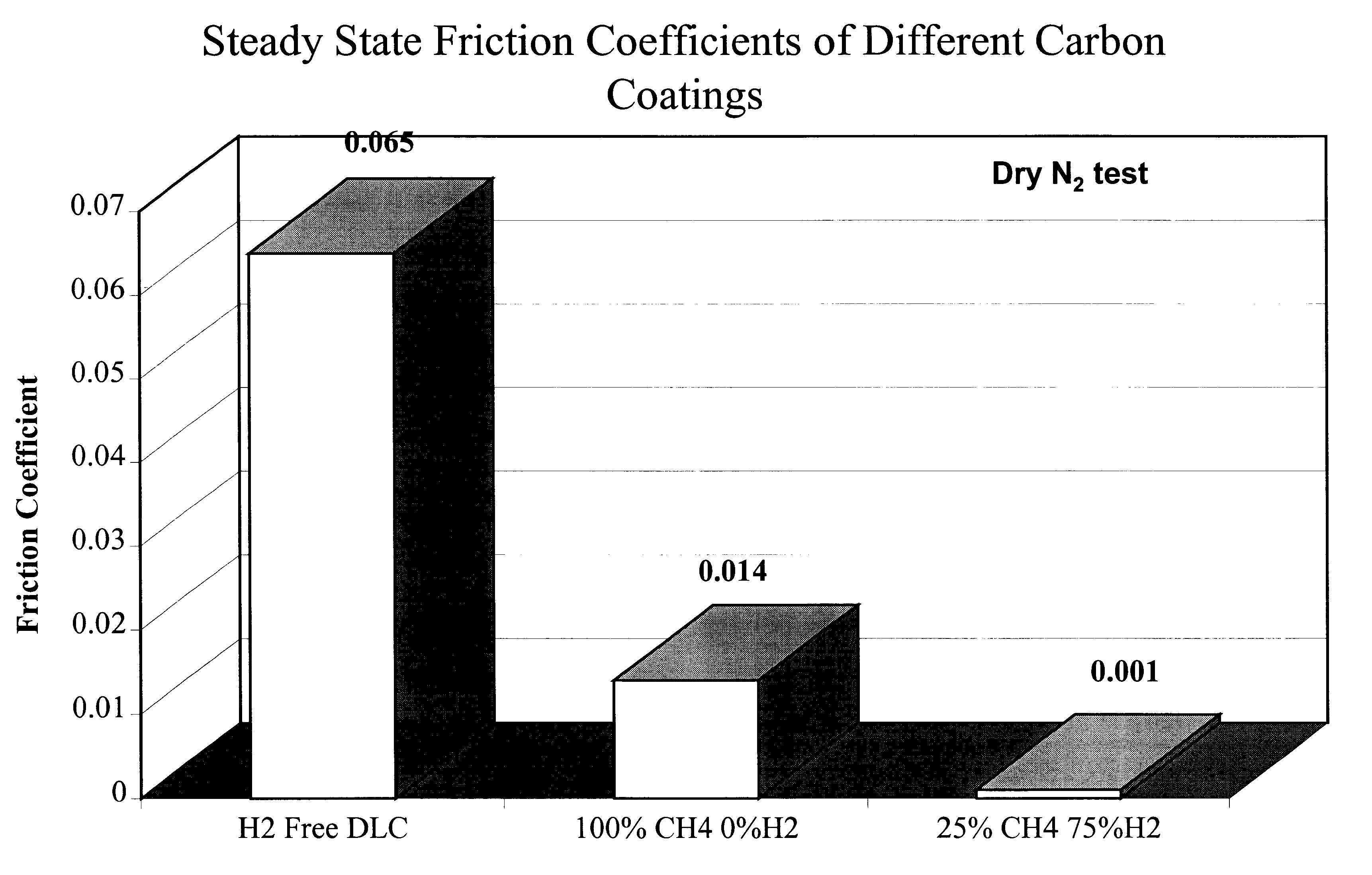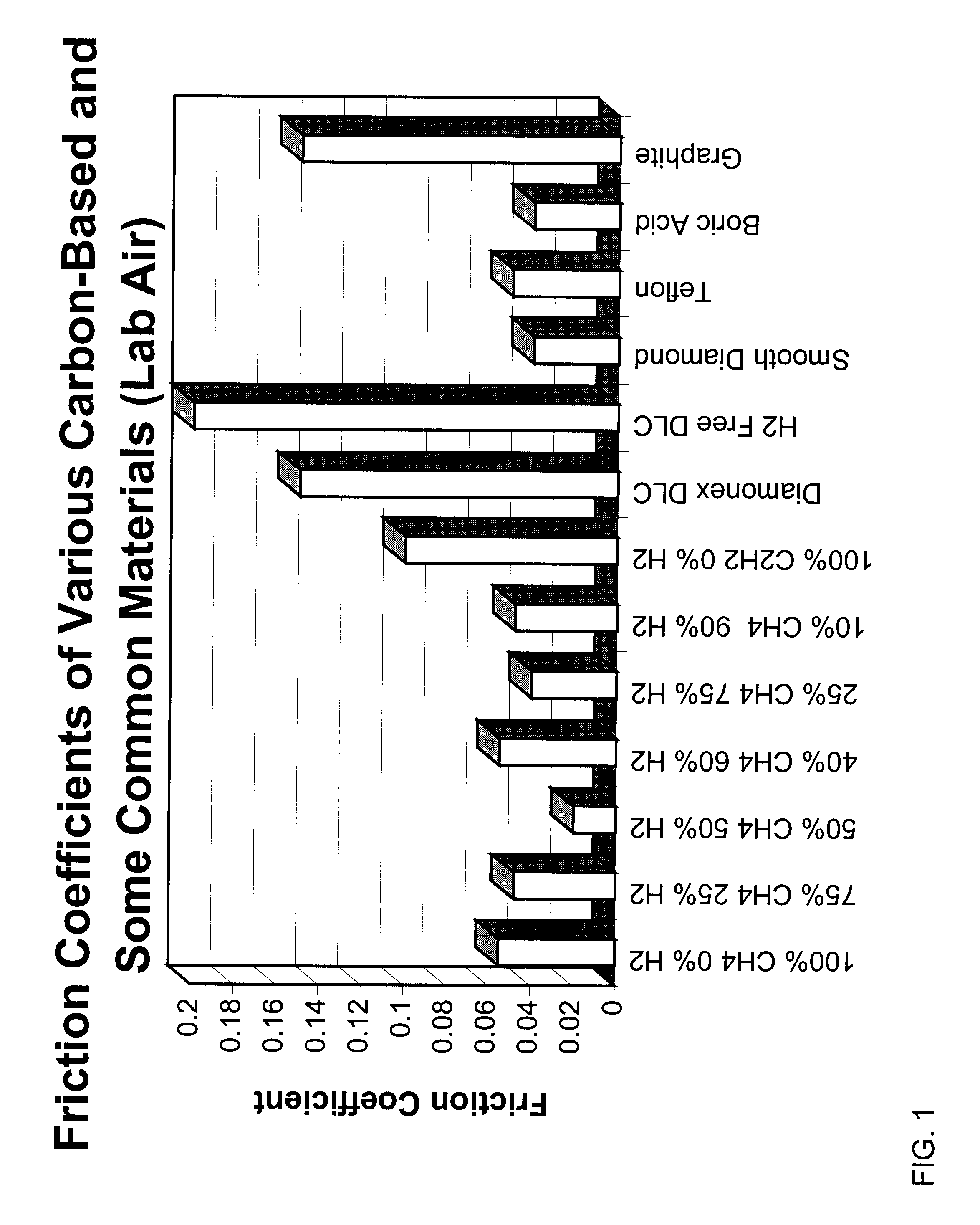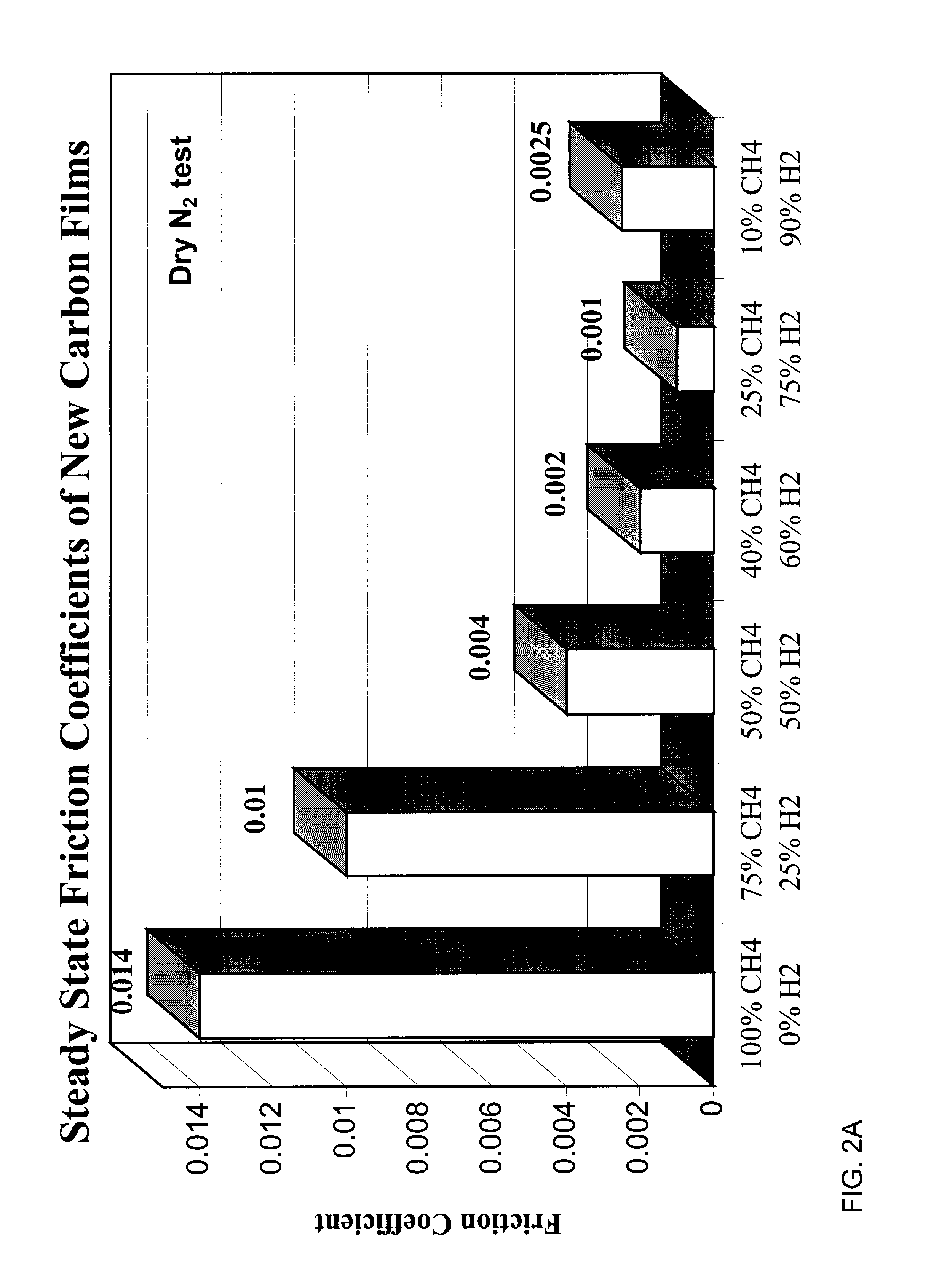Method of produce ultra-low friction carbon films
a carbon film, ultra-low friction technology, applied in the direction of instruments, record information storage, transportation and packaging, etc., can solve the problems of high frictional loss, severe wear damage on the initial mating surface, rough surface, etc., to achieve ultra-low friction and wear properties
- Summary
- Abstract
- Description
- Claims
- Application Information
AI Technical Summary
Benefits of technology
Problems solved by technology
Method used
Image
Examples
example i
This example illustrates the friction and wear performance of carbon films derived from a hydrogen-methane gas discharge plasmas. Specifically, it shows that when methane is chosen as the carbon source, the friction coefficient of carbon films generally decreases with increasing amount of hydrogen in the plasma (however, see FIG. 2A showing an apparent minimum exists in friction coefficient). For the deposition of these carbon films, we used a commercially available plasma activated chemical vapor deposition system (Perkin Elmer 2400, from Perkin Elmer Corp.). Table 4 summarizes the range of methane / hydrogen used and resulting film properties measured in accordance with previously described well known techniques.
TABLE 4 Effect of hydrogen on friction and wear properties of carbon films derived from methane (CH.sub.4). Test conditions: Load: 10 N, Speed, 0.5 m / s; Temperature, 22-23.degree. C.; test environment: dry N.sub.2. Friction Ball Wear C / H Ratio Carbon Films Grown in Coefficie...
example ii
In this example, acetylene was used as the carbon source. The film deposition parameters and friction and wear test conditions were kept the same as in Example I. Table 6 summarizes the results of friction and wear tests on acetylene-grown carbon films.
TABLE 6 Effect of hydrogen on friction and wear properties of carbon films derived from acetylene (C.sub.2 H.sub.2). Test conditions: Load: 10 N, Speed, 0.5 m / s; Temperature, 22-23.degree. C.; test environment: dry N.sub.2. Friction Wear Rates of Balls C / H Ratio Carbon Films Grown in Coefficient (mm.sup.3 / N- m) in Plasma 100% Acetylene -- 7.5 .times. 10.sup.-7 1 20% Hydrogen + 80% 0.03 -- 0.8 Acetylene 25% Hydrogen + 75% 0.027 6.86 .times. 10.sup.-4 0.75 Acetylene 50% Hydrogen + 50% 0.0175 2.53 .times. 10.sup.-7 0.5 Acetylene 75% Hydrogen + 25% 0.004 -- 0.25 Acetylene 90% Hydrogen + 10% 0.003 2.86 .times. 10.sup.-10 0.0833 Acetylene
example iii
In this example, ethane gas was used as the carbon source. The rest of the film deposition parameters and friction and wear test conditions were kept the same as in Example I. Table 7 summarizes the results of friction and wear tests on ethane-grown carbon films.
TABLE 7 Effect of hydrogen on friction and wear properties of carbon films derived from ethane (C.sub.2 H.sub.6). Test conditions: Load: 10 N, Speed, 0.5 m / s; Temperature, 22-23.degree. C.; test environment: dry N.sub.2. Friction Wear Rates of Balls C / H Ratio Carbon Films Grown in Coefficient (mm.sup.3 / N- m) in Plasma 100% Ethane -- 8.75 .times. 10.sup.-8 0.333 25% Hydrogen + 75% 0.015 2.71 .times. 10.sup.-8 0.3 Ethane 50% Hydrogen + 50% 0.0073 3.34 .times. 10.sup.-8 0.25 Ethane 90% Hydrogen + 10% 0.003 2.86 .times. 10.sup.-10 0.0833 Ethane
PUM
| Property | Measurement | Unit |
|---|---|---|
| thick | aaaaa | aaaaa |
| thick | aaaaa | aaaaa |
| thick | aaaaa | aaaaa |
Abstract
Description
Claims
Application Information
 Login to View More
Login to View More - R&D
- Intellectual Property
- Life Sciences
- Materials
- Tech Scout
- Unparalleled Data Quality
- Higher Quality Content
- 60% Fewer Hallucinations
Browse by: Latest US Patents, China's latest patents, Technical Efficacy Thesaurus, Application Domain, Technology Topic, Popular Technical Reports.
© 2025 PatSnap. All rights reserved.Legal|Privacy policy|Modern Slavery Act Transparency Statement|Sitemap|About US| Contact US: help@patsnap.com



